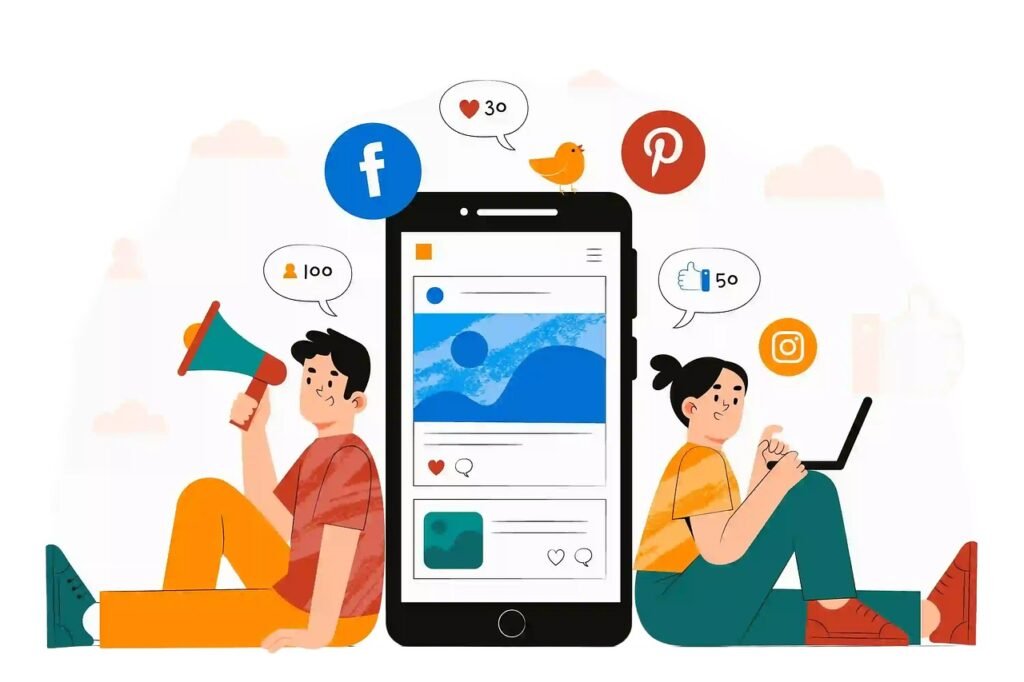This Article has been revised, edited and added to, by Poulomi Chakraborty.
- The Nexus Between Twitter and SEO
- Establishing Brand Authority through Twitter
- Using Twitter to Boost Content Visibility
- Enhancing Website Traffic with Twitter
- Monitoring and Adapting with Twitter Analytics
- Building Quality Backlinks via Twitter
- Utilizing Twitter Lists for Improved Engagement
- Conclusion: Merging Twitter and SEO for Success
In today’s digital age, where conversations are instantaneous and global, platforms like Twitter reign supreme in shaping narratives. For travel businesses, Twitter is not just a platform for 280-character updates but a powerful tool that can influence Search Engine Optimization (SEO) strategies. As search engines evolve, they’re increasingly factoring in social signals to determine the relevance and authority of a website. But how does Twitter, with its fleeting tweets and trending hashtags, impact the SEO game for travel enterprises? Buckle up, as we delve deep into understanding this synergy and how travel businesses can harness the power of Twitter to bolster their SEO efforts.
The Nexus Between Twitter and SEO

Contrary to what some might believe, Twitter does more than just drive direct traffic to your website. It shapes online conversations and establishes authority – both crucial for SEO.
- Social Signals: These are likes, retweets, and mentions on Twitter. Search engines, though not openly admitting, seem to consider these signals as indications of content relevancy and popularity.
- Content Distribution: Each tweet is an opportunity to distribute your content to a wider audience. The more your content is shared and engaged with, the higher its visibility, indirectly boosting SEO.
Leveraging Tweet Engagement for SEO Insight
An often-overlooked aspect of Twitter’s impact on SEO is the wealth of data it provides through engagement metrics. By analyzing which tweets receive the highest engagement, travel businesses can gain valuable insights into what their audience finds most compelling. This data should not just inform your Twitter strategy but also your broader content marketing and SEO efforts. For instance, if tweets about eco-friendly travel tips garner significant interaction, this indicates a topic of high interest that can be expanded into more detailed blog posts or featured on your website’s homepage.
Strategic Use of Keywords and Hashtags
While the original article highlighted the importance of hashtags for visibility, expanding on this, it’s crucial to integrate your SEO keyword strategy with your Twitter presence. Identifying keywords that are not only relevant to your business but also frequently searched for can amplify your content’s reach on Twitter. Incorporating these keywords naturally into your tweets, alongside popular and relevant hashtags, can create a dual effect of boosting your visibility both on Twitter and in search engine results. This strategic alignment ensures that your Twitter activity contributes directly to your site’s SEO performance by targeting the same set of keywords across platforms.
Collaborating with Niche Communities
Twitter is a melting pot of niche communities, many of which are invaluable to the travel industry. Engaging with these communities by participating in discussions, sharing relevant content, and contributing valuable insights can establish your travel business as a respected voice within these circles. This engagement can lead to increased shares and mentions, improving social signals associated with your website. Furthermore, by focusing on building relationships within specific communities, you can attract highly targeted traffic to your site, which is more likely to convert into bookings or inquiries.
Optimizing Twitter Profile for Search Visibility
An area often overlooked by travel businesses is the optimization of their Twitter profile itself. Your profile should be treated as an extension of your website, with careful attention paid to incorporating keywords into your bio, the use of a relevant profile picture and cover photo, and a pinned tweet that highlights your unique value proposition or current promotion. This optimization ensures that your Twitter profile, in addition to your tweets, ranks well in search results for your brand name, thereby providing an additional entry point to your website.
Integrating Twitter Activity with Overall SEO Strategy
Finally, the synergy between Twitter and SEO is maximized when integrated into an overarching digital marketing strategy. This means coordinating your Twitter activity with your content calendar, ensuring that tweets support and amplify new blog posts, landing pages, or other content efforts. It also involves tracking the impact of Twitter-driven traffic on your website’s performance metrics, such as bounce rate, time on site, and conversions. This holistic approach ensures that efforts on Twitter not only improve social engagement but also contribute directly to achieving your SEO and business goals.
By expanding upon the nexus between Twitter and SEO, travel businesses can unlock new levels of engagement and visibility. The strategic integration of Twitter activities with SEO initiatives can lead to a virtuous cycle, where improved social signals and content visibility on Twitter enhance search engine performance, which in turn drives more targeted traffic to your site. The key is to remain strategic, data-driven, and always focused on delivering value to your audience.
Establishing Brand Authority through Twitter

Search engines are all about providing users with the most relevant and authoritative content. Here’s how Twitter can help travel businesses assert their authority:
- Consistent Engagement: Regular tweets, responses to users’ queries, and participation in travel-related discussions enhance brand visibility and position your business as an industry leader.
- Share Expert Content: Don’t limit your tweets to promotional content. Share travel tips, insights about destinations, or the latest travel news. This showcases your expertise and draws in a more engaged audience.
- Build Relationships with Influencers: Engaging with and getting retweets or mentions from travel influencers can boost your brand’s credibility.
Cultivating a Community of Brand Advocates
One of the most potent methods to amplify your brand’s authority is through the cultivation of a community of brand advocates on Twitter. This goes beyond engaging with influencers; it’s about nurturing relationships with your most passionate followers, encouraging them to share their experiences and stories related to your brand. By recognizing and sharing user content, you not only validate their experiences but also demonstrate that your brand values customer satisfaction and engagement. This community-driven approach fosters a sense of belonging among your followers, making them more likely to champion your brand organically.
Hosting Interactive Twitter Events
Interactive Twitter events, such as Q&A sessions, Twitter polls, or themed tweet chats, can significantly enhance your brand’s visibility and authority. These events offer a direct line of communication between your brand and your audience, allowing for real-time engagement and feedback. By hosting these events on topics relevant to the travel industry, you position your brand as a thought leader and go-to resource for travel advice and information. Furthermore, these events provide valuable content that can be repurposed across your marketing channels, further extending your brand’s reach.
Leveraging Twitter for Market Research
Twitter is not just a platform for broadcasting your messages; it’s also a goldmine of insights into customer preferences, emerging travel trends, and competitor strategies. By strategically analyzing tweets, hashtags, and conversations within your niche, you can gather actionable intelligence that informs your marketing strategy, product offerings, and customer service approaches. This proactive use of Twitter for market research showcases your brand’s commitment to innovation and customer-centricity, key components of authoritative brands.
Integrating Twitter with Other Marketing Efforts
For travel brands aiming to establish authority, integrating Twitter activities with broader marketing efforts is crucial. This includes synchronizing your Twitter content with email marketing campaigns, website updates, and promotional events. Such integration ensures a cohesive brand message across all channels, amplifying your brand’s voice and authority. Additionally, leveraging Twitter to drive participation in cross-platform campaigns can significantly increase your campaign’s reach and impact.
Showcasing Your Brand’s Unique Personality
In a sea of travel businesses vying for attention on Twitter, standing out requires showcasing your brand’s unique personality. This can be achieved through the tone of your tweets, the type of content you share, and how you engage with followers. Whether your brand is adventurous, luxurious, eco-conscious, or budget-friendly, consistently expressing your brand’s personality on Twitter can attract a like-minded audience and solidify your position as an authoritative voice in your niche.
Using Twitter to Boost Content Visibility

With millions of tweets sent every day, there’s a potential goldmine of visibility waiting to be tapped.
- Use Relevant Hashtags: Just as keywords are vital for SEO, hashtags play a similar role on Twitter. Research trending travel-related hashtags or create branded ones unique to your business.
- Share User-Generated Content (UGC): Encourage travelers to share their experiences with your business and retweet these testimonials. Authentic UGC can enhance trust and drive more traffic to your site.
- Visual Content: Tweets with images or videos get more engagement than plain text. Share stunning visuals of travel destinations, customer testimonials, or behind-the-scenes glimpses of your services.
Crafting Compelling Narratives
The power of storytelling cannot be overstated in the world of social media. On Twitter, where brevity is king, crafting tweets that tell a compelling narrative in a few words or through a series of tweets can captivate your audience’s attention. For travel businesses, this could mean sharing intriguing stories behind popular destinations, unexpected adventures of real travelers, or the journey of your brand. These narratives encourage retweets and shares, increasing the visibility of your content across the network.
Strategic Timing and Frequency
The timing and frequency of your tweets play a crucial role in maximizing content visibility. Utilizing Twitter analytics, identify when your target audience is most active and schedule your tweets accordingly. Experimenting with tweeting at different times can also uncover new audience segments. Additionally, maintaining a consistent posting schedule keeps your audience engaged and your brand top-of-mind.
Collaborating for Cross-Promotion
Partnering with complementary brands, local tourism boards, or travel influencers for cross-promotion can significantly expand your content’s reach. This strategy involves sharing each other’s content, co-creating content, or even hosting joint Twitter events. These collaborations introduce your brand to new audiences while providing fresh and diverse content to your existing followers.
Engaging with Trending Topics
Engaging with trending topics related to travel can boost your content‘s visibility to users following those trends. However, it’s important to approach this with authenticity, ensuring your content adds value to the conversation. This could involve sharing your expert insights on a trending travel destination, offering tips related to a popular travel topic, or contributing to discussions on travel-related news. This strategy not only increases visibility but also positions your brand as a relevant and informed voice in the industry.
Utilizing Twitter Ads for Targeted Reach
For content that you want to guarantee visibility for, Twitter Ads offer a powerful tool for targeted reach. Sponsored tweets can be tailored to appear in the feeds of specific demographics, interests, or geographic locations, ensuring your content is seen by those most likely to engage with it. This is particularly useful for promoting special offers, new blog posts, or key pieces of content that can drive traffic to your website.
Interactive Content for Enhanced Engagement
Creating interactive content, such as polls, quizzes, or Twitter threads that encourage participation, can significantly increase the visibility of your tweets. Interactive content not only engages your current followers but, due to its engaging nature, is more likely to be shared, further amplifying your reach. For travel businesses, this could involve polls on favorite travel destinations, quizzes about travel facts, or engaging threads on travel tips.
Enhancing Website Traffic with Twitter

Directing Twitter followers to your website can lead to an uptick in your website traffic, signaling search engines about your site’s relevance.
- Tweet Your Blog Posts: If you run a travel blog, tweet every new post. Not only does this drive traffic, but retweets can enhance its reach exponentially.
- Limited-Time Offers: Tweet exclusive deals or promotional offers that require users to visit your website to avail them.
- Engaging CTAs: A compelling Call-to-Action can be the difference between a mere content view and a website visit. Use phrases like “Discover more here!” or “Unveil the travel secret on our site!”
Crafting a Content Ecosystem
Building a content ecosystem involves creating a network of content across your Twitter account and website that complements and feeds into each other. Start by identifying key content pillars that align with your brand’s value proposition and audience interests. For each pillar, develop themed content for your website, such as in-depth guides, blog posts, or landing pages. Then, create engaging Twitter content that highlights intriguing aspects of these resources, encouraging followers to explore the full content on your website. This ecosystem not only drives traffic but also positions your brand as a comprehensive resource within your niche.
Leveraging Twitter Moments for Storytelling
Twitter Moments is a feature that allows users to curate stories showcasing multiple tweets. Travel businesses can leverage Moments to tell compelling stories about destinations, customer experiences, or themed travel journeys. By embedding links within these Moments that direct users to your website, you can provide a richer narrative experience that encourages deeper engagement with your brand. Moments can be promoted through your Twitter feed, creating an interactive showcase that drives followers to your website for the full story.
Optimizing for Mobile Users
With the majority of Twitter users accessing the platform via mobile devices, ensuring your website is mobile-optimized is crucial for converting Twitter traffic into meaningful engagement. This includes fast loading times, easy navigation, and mobile-friendly content formats. When tweeting links to your website, highlight the seamless mobile experience, encouraging users to visit your site on-the-go. This approach not only supports SEO efforts through improved user engagement metrics but also caters to the mobile-first nature of today’s online audience.
Personalized Engagement to Drive Traffic
Personalized engagement on Twitter, such as responding to queries, commenting on followers’ tweets, or tailoring content based on user interactions, can significantly increase the likelihood of followers visiting your website. By establishing a personal connection with your audience, you create a loyal community that is more inclined to engage with your website content. Highlighting user-generated content on your website and sharing these stories on Twitter can further encourage website visits, creating a cycle of engagement that benefits both your Twitter presence and website traffic.
Using Analytics to Refine Strategy
Continuous monitoring and analysis of your Twitter-driven website traffic is essential for refining and optimizing your strategy. Utilize tools like Google Analytics in conjunction with Twitter Analytics to track how Twitter traffic interacts with your website. Analyze metrics such as bounce rate, session duration, and conversion rate to understand the effectiveness of your Twitter traffic. Use these insights to adjust your content and engagement strategies on Twitter, ensuring that you are effectively driving not just more traffic, but more engaged traffic to your site.
Monitoring and Adapting with Twitter Analytics

Just as SEO requires regular monitoring, your Twitter strategies need to be analyzed for effectiveness.
- Track Engagement: Use Twitter Analytics to understand which tweets get the most engagement. This can offer insights into the type of content your audience prefers.
- Website Clicks: Monitor the number of clicks your website links receive from Twitter. This can guide your content strategy, helping you focus on what drives traffic.
- Follower Insights: Delve into demographics, interests, and behaviors of your followers. Tailoring your content to cater to them can lead to better engagement and more website visits.
Utilizing Engagement Metrics for Content Optimization
Deep diving into engagement metrics reveals which types of content foster the most interaction from your audience. However, beyond surface-level metrics like likes and retweets, analyze the nuances of engagement—such as the time spent on tweets, the engagement rate per tweet, and the types of interactions (e.g., clicks vs. retweets). This analysis can uncover patterns that indicate what content best captures your audience’s interest, guiding you to refine your content strategy both on Twitter and your website to better cater to these preferences, thus enhancing user engagement and SEO.
Audience Analysis for Tailored Content Creation
Twitter Analytics provides a wealth of data about your followers, including demographics, interests, and behaviors. This section goes beyond basic demographic information, encouraging a deeper analysis to identify specific segments within your audience. By understanding the nuanced interests and behaviors of these segments, travel businesses can create highly tailored content that resonates on a personal level. For example, if a significant portion of your audience is interested in eco-friendly travel, developing content themes around sustainable tourism can attract more engagement and website visits, positively impacting your SEO.
Competitive Analysis for Strategic Positioning
Monitoring competitors through Twitter Analytics can provide strategic insights into their content performance, audience engagement, and growth tactics. Identify competitors with high engagement rates and analyze their content strategy, tweet frequency, and audience interactions. This analysis can reveal gaps in your own strategy or highlight trends you may not have capitalized on. By adapting successful elements of competitors’ strategies while maintaining your unique brand voice and value proposition, you can enhance your Twitter presence and SEO effectiveness.
Sentiment Analysis for Brand Reputation Management
Sentiment analysis, though not a direct feature of Twitter Analytics, can be conducted through third-party tools that analyze the tone and sentiment of tweets mentioning your brand or related keywords. Understanding the sentiment around your brand on Twitter allows you to address negative feedback proactively and amplify positive experiences. Positive brand sentiment not only encourages more engagement on Twitter but also improves brand reputation, a factor that indirectly influences your website’s SEO through increased brand searches and engagement.
Integration with Web Analytics for a Holistic View
To truly maximize the SEO benefits of your Twitter activities, integrate Twitter Analytics data with your web analytics platform. This integration allows you to track the journey of Twitter users to your website, analyzing their behavior, conversion rates, and the content that drives the most valuable traffic. By understanding how Twitter interactions translate into website engagement, you can more accurately tailor your content and SEO strategies to the preferences and behaviors of your Twitter audience.

Related: Check out our free SEO suite

Building Quality Backlinks via Twitter
In the realm of SEO, backlinks – links from external websites that point to your site – are golden. Twitter provides a platform for organic backlink generation.
- Engage with Bloggers and Journalists: Twitter is rife with travel bloggers and journalists. Engaging with them and sharing valuable content might prompt them to link back to your site in their articles.
- Shareable Content: Craft tweets that are not just informative but also share-worthy. The more your content is retweeted, especially by accounts with a significant following, the higher the chance of obtaining backlinks.
- Host Twitter Chats: Organize and host Twitter discussions on trending travel topics. This not only positions you as a thought leader but also attracts attention from industry insiders who might reference and link back to your content.
Engaging with Niche Communities for Organic Backlinks
Beyond the broad engagement strategies previously discussed, focusing on niche communities within Twitter presents an opportunity to gain organic, high-quality backlinks. Identify and become an active participant in conversations related to specific travel niches that align with your business, such as eco-tourism, luxury travel, or adventure travel. By providing valuable insights, sharing useful content, and engaging genuinely with these communities, you increase the likelihood that community members, bloggers, and content creators will reference and link back to your website in their own content.
Creating and Promoting Original Research
One of the most effective ways to earn backlinks is by creating original research, studies, or surveys relevant to the travel industry. Utilize Twitter to both source data—by engaging followers in surveys or polls—and to share findings wrapped in compelling infographics or summaries. Content that offers new insights or data is highly shareable and link-worthy, particularly if it taps into current trends or debates within the travel sector. Promote your research actively on Twitter, targeting influencers, travel journalists, and niche community leaders who might find your data valuable enough to cite in their own work.
Hosting Virtual Events and Webinars

Leverage the power of Twitter to host and promote virtual events, webinars, or live Q&A sessions that address topics of interest within the travel industry. These events not only engage your audience but also position your brand as a thought leader in your field. By providing insightful, valuable content during these sessions, you encourage participants and viewers to share and link to your event’s landing page or related content on your website. Make sure to create a unique, memorable hashtag for your event to streamline engagement and sharing.
Collaborating with Influencers for Content Creation
Influencer collaborations on Twitter can go beyond simple retweets or mentions. Engage travel influencers in content creation projects such as co-authored blog posts, interviews, or guest contributions on your site. This type of collaboration is mutually beneficial, as it provides influencers with fresh content to share with their audience while directing their followers to your website, potentially earning you backlinks from the influencer’s platform or other sites that pick up the content.
Utilizing Multimedia Content for Broader Reach
Multimedia content, such as videos, podcasts, and photo essays, can significantly increase your content’s shareability and link-worthiness on Twitter. Create high-quality, engaging multimedia content that highlights unique travel destinations, tips, or stories, and promote it actively on Twitter. Such content is more likely to be shared across social platforms and can attract backlinks from websites looking to enhance their own content with rich media. Ensure that each piece of multimedia content is accompanied by a compelling call to action directing viewers to your website for more information.
Utilizing Twitter Lists for Improved Engagement
Twitter Lists can be a strategic tool for travel businesses aiming to bolster their SEO through targeted engagement.
- Create Niche Lists: Segment your followers or those you follow into lists – Travel Bloggers, Adventure Travelers, Luxury Vacationers, etc. This allows you to tailor your content to specific audiences, increasing engagement probability.
- Engage with Lists: Regularly check in on these lists, engaging with their content. This nurtures relationships and keeps your brand top-of-mind for them.
- Public vs. Private Lists: While public lists can be seen by anyone and those added get notified, private lists are visible only to you. Depending on your strategy, choose the type wisely.
Developing Highly Curated Audience Segments
Creating highly curated lists based on specific interests, behaviors, or engagement levels with your brand can significantly enhance the relevance and impact of your communication. For instance, separate lists for adventure travelers, luxury holiday seekers, and budget backpackers allow for tailored content that resonates deeply with each segment. This targeted approach ensures that your messages are always relevant, increasing the likelihood of engagement and shares, which in turn boosts your social signals for SEO.
Influencer Collaboration and Monitoring
Beyond merely listing influencers, actively monitor and engage with the content shared by travel influencers within your niche. Use these lists to identify collaboration opportunities, such as co-hosting Twitter chats, participating in mutual promotions, or content sharing. This targeted engagement not only fosters relationships with key influencers but also increases your brand’s exposure to their followers, enhancing your brand’s authority and backlink potential.
Leveraging Lists for Competitive Analysis

Utilize Twitter Lists to keep tabs on competitors without necessarily following them. This stealth monitoring allows you to stay updated on their content strategy, promotional offers, and customer engagement tactics. Analyzing these insights enables you to identify gaps in your own strategy and discover innovative approaches to differentiate your brand, keeping you a step ahead in the SEO game.
Customizing Content Strategy Based on List Insights
Use the engagement patterns and interests of users in your Twitter Lists to customize your content strategy both on Twitter and your website. For example, if tweets about sustainable travel practices consistently engage users in your “Eco-Friendly Travelers” list, consider creating more content on this topic across your platforms. Tailoring your content based on list insights not only improves engagement on Twitter but also drives targeted traffic to your website, a key factor in SEO success.
Engaging with Niche Lists for Community Building
Identify and engage with existing Twitter Lists within your travel niche curated by other users, brands, or influencers. Participating in these communities by sharing valuable insights, content, and engaging in conversations can raise your brand’s profile within these groups. This increased visibility can lead to more followers, higher engagement, and improved chances of earning backlinks from community members’ blogs or websites.
Conclusion: Merging Twitter and SEO for Success
In conclusion, the intersection of Twitter and SEO represents a dynamic frontier for travel businesses seeking to enhance their digital footprint. Embracing Twitter as more than a social platform, but as a vital component of your SEO strategy, unlocks new avenues for engagement, brand visibility, and web traffic growth. The essence of success in this realm lies in the strategic fusion of Twitter’s real-time engagement capabilities with the long-term objectives of SEO.
By crafting compelling content, leveraging analytics for insights, and fostering community interaction, businesses can amplify their online authority and reach. Furthermore, the nuanced integration of Twitter activities with SEO efforts ensures not only immediate visibility but also sustainable growth. In navigating the evolving digital landscape, travel businesses that adeptly merge Twitter’s dynamic engagement with SEO’s foundational principles will carve out a distinctive presence online, driving both immediate audience connection and lasting search engine relevance.
Read Next
- Instagram SEO Strategies for Travel Influencers
- Social Media Signals and SEO for Travel Websites
- How to Use Analytics to Understand Travel Seasonality
- Analyzing User Behavior and its SEO Implications
- Using Funnel Analysis for Better Conversion Rates






















Comments are closed.